Kintamani is a popular destination for many visitors to Bali and is often included on tours of north-eastern Bali. It is a mountain village perched on the south western rim of an ancient collapsed volcanic caldera, about a thousand metres above sea level. Although it is not obvious from the ground, there are actually two roughly concentric calderas. The larger, approximately 10 x 13 km, contains a lake (Lake Batur) and another caldera about 7 km in diameter. An active volcano, “Gunung Batur” (Mt Batur), rises 700m up from the inner caldera and its peak is higher than the wall of the outer caldera.
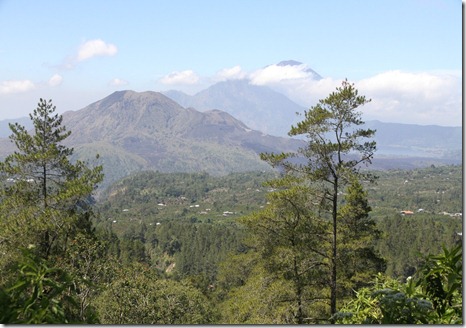 |
| Mount Batur within the crater |
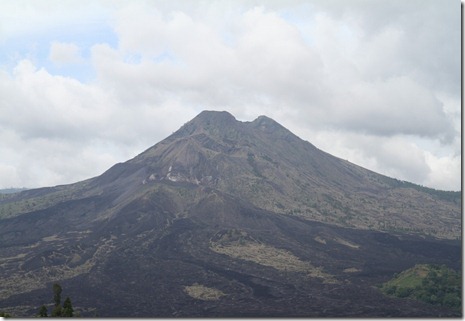 |
| Mount Batur with the basalt lava flows below it |
Within the crater are 5 small villages located along the shore of Lake Batur and increasing numbers of gardens, orchards, farms and clusters of houses dotted around the often barren floor of the crater. Visitors come to enjoy the mountain air and take in the views of the volcano. The sacred mountain “Gunung Agung” is not too far to the south east.
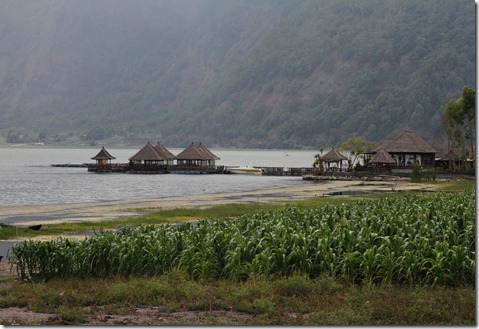 |
The jetty for one of the small villages
and fields of corn at the water's edge. |
The floor of the crater has an eerie appearance as much of it is just bare, solidified basalt, the result of frequent eruptions or regular lava seepage from the many lava vents around the volcano. In places vegetation is slowly creeping back across the scorched landscape.
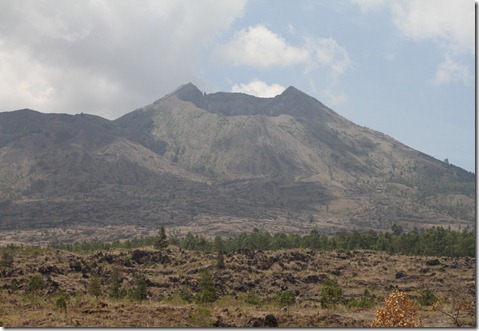 |
| Trees are starting to cover the barren slopes of Mount Batur |
Although the volcano has been active for thousands of years, the first documented eruption was in 1804. Since then destructive eruptions have occurred in 1917 (accompanied by an earthquake), 1926, 1963, 1974, 1994 and 2000. The frequent eruptions have distributed fertile volcanic ash widely so today the surrounding areas are rich agricultural and horticultural lands. Fruit trees, especially citrus and jack fruit, grow well and fruit stalls are a common sight along the roads. Vegetables are grown along the shores and the lake is fished commercially.
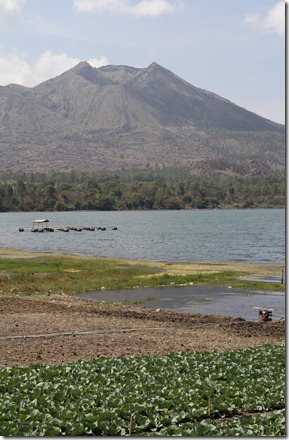 |
Cabbages are grown at the lake's edge
Mount Batur looms up behind the lake
|
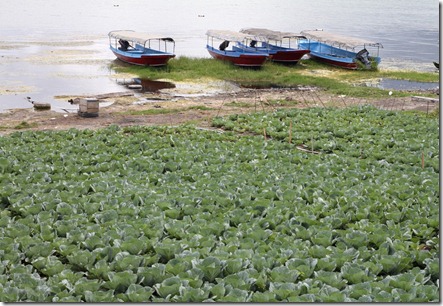 |
| Cabbages and fishing boats / local transport |
 |
| Fish traps in Lake Batur |
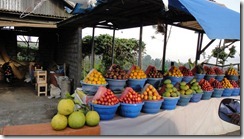 |
Along the roads many fruit stalls offer
a range of locally grown produce |
At several points within the crater, hot springs rise to the surface and small spas now allow you to “take the waters” and relax in the hot mineral water reputed to have beneficial health properties. Tourism is increasingly important and now along the rim are many restaurants, large and small, but the view, not the food, draws the visitors. In turn, the visitors attract hordes of small vendors selling paintings, sarongs, t-shirts, bracelets and just about anything portable.
Kintamani is also the starting point for many cycle tour companies which provide guided rides from Kintamani down to the edge of the town of Ubud. The scenic ride of about 42 km is about 70% downhill, 26% on the flat and only 4% uphill (but those are good hills). The ride takes you along quiet roads, small paths and trails through villages, past temples and between rice fields.
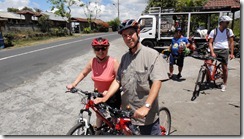 |
| Guess who? - cyclists about to start downhill from Kintamani |
 |
| Fighting cocks under baskets along the roadside |
 |
| Children watch the cyclists pass by |
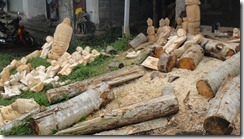 |
Wood sculpture workshop - the
whole village produces the same item |
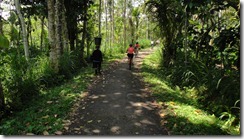 |
| Cycling along a quiet pathway |
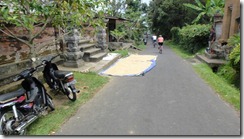 |
| Grain spread to dry beside the road |
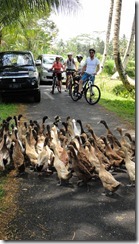 |
| Caution, ducks crossing |
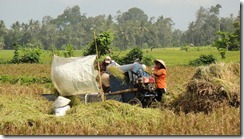 |
| A small mechanised threshing plant |
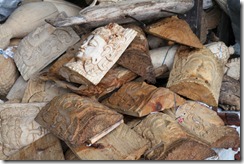 |
| Carved faces at different stages of production |
You really get to appreciate the diversity of the local countryside and the pattern of daily life as you travel slowly along the route. It’s a wonderful way to see this part of Bali.
Of the many companies offering bicycle rides (perhaps in conjunction with other activities) we have ridden with both "Bintang" and "Pelangi" groups.
Paul in Bali
August 2012




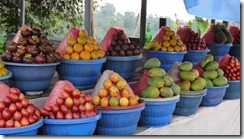














No comments:
Post a Comment